CAPE CANAVERAL AIR FORCE STATION, FL – On a gloomy night and delayed by rain showers and thick threatening clouds to the very last moment of a two and a half launch window, the completely clandestine satellite known only as CLIO climbed slowly from a Cape Canaveral launch pad atop the thunderous flames of an Atlas V rocket on Tuesday evening on a mysterious mission to orbit.
Under a veil of secrecy for an unknown US government customer, the clouds cleared just enough to finally launch CLIO on a United Launch Alliance (ULA) Atlas V booster at 8:10 p.m. EDT September 16, 2014 from Space Launch Complex-41 on Cape Canaveral Air Force Station, Fla.
A series of ugly thunderstorms with a deluge of rain shows repeatedly passed by the launch pad forcing a weather related delay from the initial daylight launch time of 5:44 p.m.
The 19 story rocket is protected by a quartet of lighting masts ringing the launch pad. And they did their job last night.

It was touch and go with the weather at the Cape all evening. None of us knew what would happen with the satellite we know nothing about. So the weather induced hazy view of the pad fit perfectly with the mystery missions hazy motif.
Normally, even the highly secretive US National Reconnaissance Office (NRO) claims ownership of their satellites named with what seems to be a random numbering scheme.
But not for CLIO. The only publicly released information is that CLIO was built by Lockheed Martin and derived from their commercial A2100 series satellite bus used for commercial telecommunications satellites among others.
“It is an honor to work with Lockheed Martin Space Systems Company and all of our mission partners to launch this very important satellite,” said Jim Sponnick, ULA vice president, Atlas and Delta Programs, in a statement.
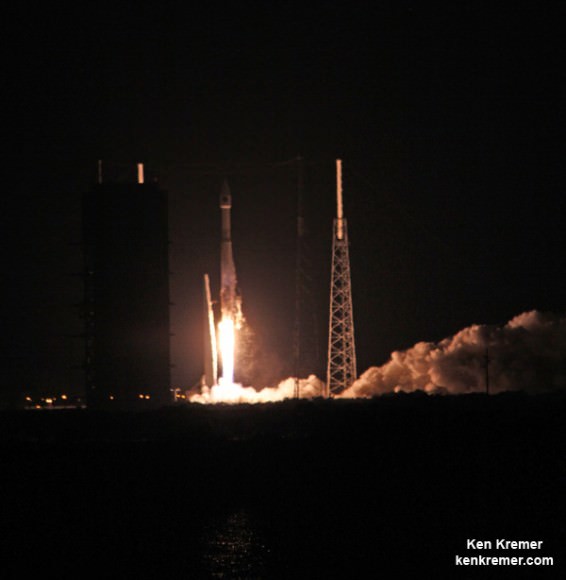
“Today’s launch marks ULA’s 11th successful mission this year and the 88th successful mission since ULA was formed in December 2006, a true testament to the team’s focus on mission success, one launch at a time.”
Myself and other media were allowed to visit the launch pad and photograph the rocket up close with the CLIO insignia emblazoned on the payload fairing, shrouding the mysterious satellite beneath.
But even the CLIO insignia is completely nondescript, unlike the rather artistic NRO logos with cool imaginary creatures and a number like NR0-66 for example.
We do know the type of rocket utilized is an Atlas V 401 configuration vehicle, which includes a 4-meter-diameter payload fairing and no solid rocket motors.

We do know that the Atlas booster for this mission was powered by a Russian made RD AMROSS RD-180 engine as is customary. The Centaur upper stage was powered by a single Aerojet Rocketdyne RL10A engine, according to ULA.
We do know the launch was successful and certainly a spectacular sight for myself and all the spectators.
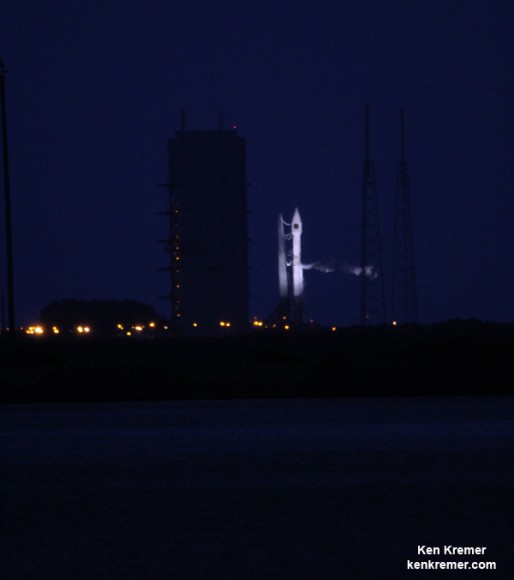
CLIO is presumably somewhere in Earth orbit, circling overhead secretly at unknown altitude(s) and inclination(s).
CLIO marks ULA’s 60th successful mission from Cape Canaveral, the 11th successful mission this year and the 88th successful mission since the company’s formation in 2006.
Stay tuned here for Ken’s continuing Earth and Planetary science and human spaceflight news.
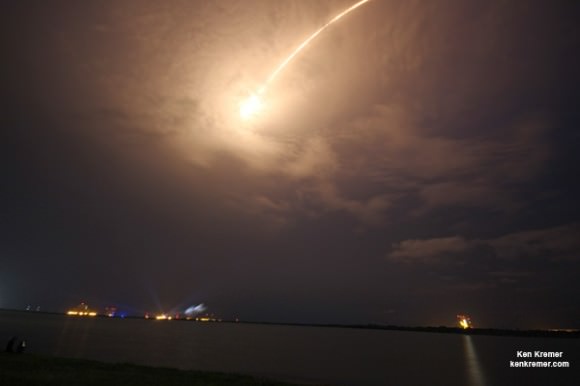
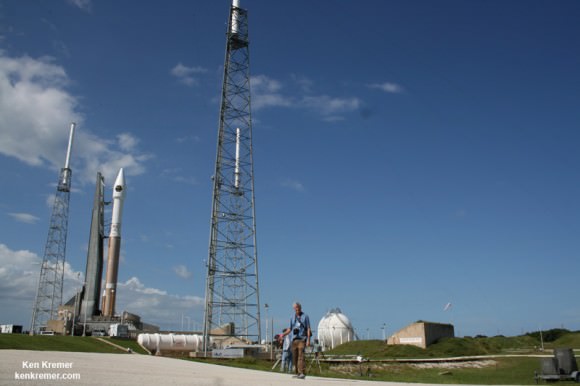

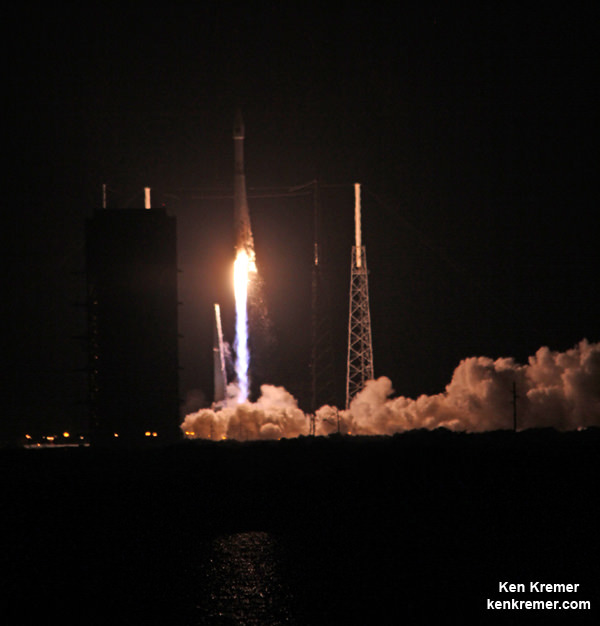
Well… for sure it’s not an X-37B, wrong fairing. It IS curious though that this mission has so thoroughly been kept under wraps. What? Are they returning one of the rescued aliens back into space? YIKES!